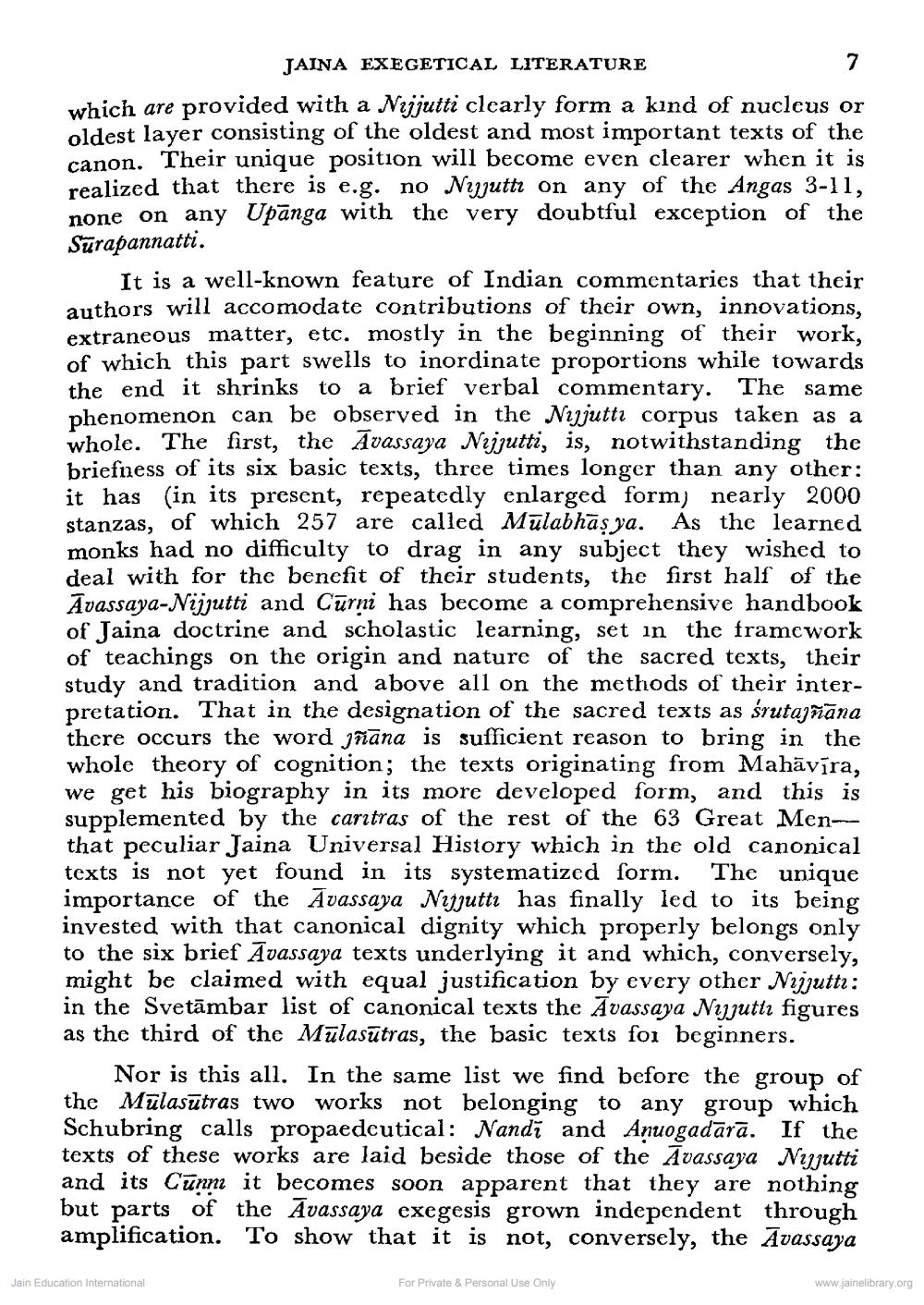________________
JAINA EXEGETICAL LITERATURE which are provided with a Nejjutti clearly form a kind of nucleus or oldest layer consisting of the oldest and most important texts of the canon. Their unique position will become even clearer when it is realized that there is e.g. no Nijutti on any of the Angas 3-11,
one on any Upānga with the very doubtful exception of the Surapannatti.
It is a well-known feature of Indian commentaries that their authors will accomodate contributions of their own, innovations, extraneous matter, etc. mostly in the beginning of their work, of which this part swells to inordinate proportions while towards the end it shrinks to a brief verbal commentary. The same phenomenon can be observed in the Nijutti corpus taken as a whole. The first, the Avassaya Nijjutti, is, notwithstanding the briefness of its six basic texts, three times longer than any other: it has (in its present, repeatedly enlarged form) nearly 2000 stanzas, of which 257 are called Mūlabhāsya. As the learned monks had no difficulty to drag in any subject they wished to deal with for the benefit of their students, the first half of the Āvassaya-Nijutti and Cūrni has become a comprehensive handbook of Jaina doctrine and scholastic learning, set in the framework of teachings on the origin and nature of the sacred texts, their study and tradition and above all on the methods of their interpretation. That in the designation of the sacred texts as śrutajñāna there occurs the word jñāna is sufficient reason to bring in the whole theory of cognition; the texts originating from Mahāvīra, we get his biography in its more developed form, and this is supplemented by the caritras of the rest of the 63 Great Men that peculiar Jaina Universal History which in the old canonical texts is not yet found in its systematized form. The unique importance of the Āvassaya Nijjuttı has finally led to its being invested with that canonical dignity which properly belongs only to the six brief Avassaya texts underlying it and which, conversely, might be claimed with equal justification by every other Nijjuttı: in the Svetāmbar list of canonical texts the Avassaya Nujutti figures as the third of the Mülasūtras, the basic texts foi beginners.
Nor is this all. In the same list we find before the group of the Mülasūtras two works not belonging to any group which Schubring calls propaedeutical: Nandi and Anuogadārā. If the texts of these works are laid beside those of the Avassaya Nuutti and its Cūnn it becomes soon apparent that they are nothing but parts of the Avassaya exegesis grown independent through amplification. To show that it is not, conversely, the Avassaya
Jain Education International
For Private & Personal Use Only
www.jainelibrary.org




